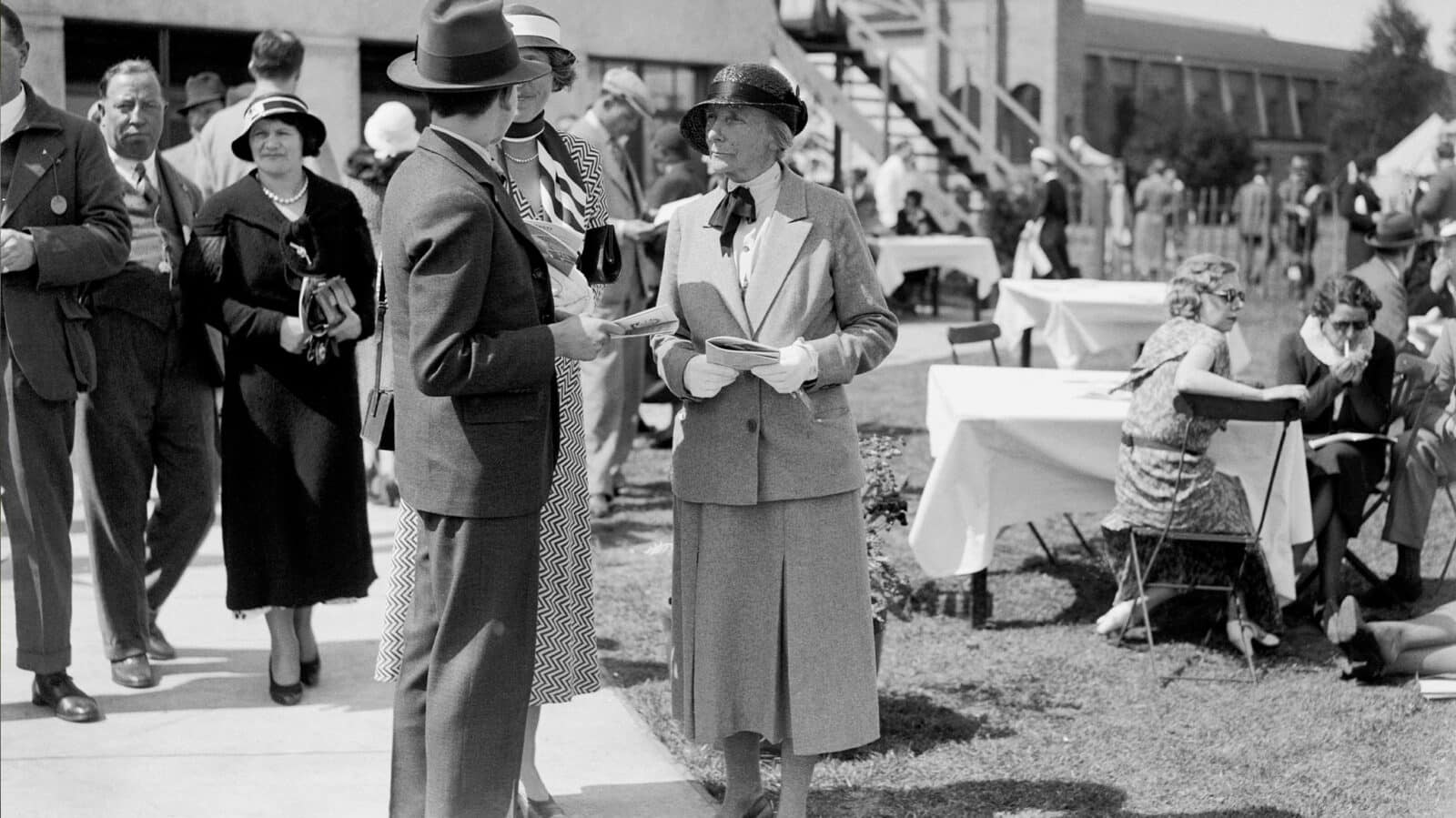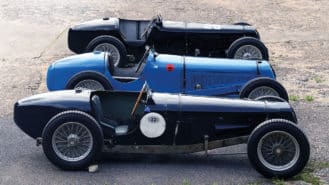Ethel married Hugh Locke King in 1884, when she was 20 and he 28. “They wintered abroad as he had chest trouble, and while staying at Pau that they saw the road race there in 1901,” says Hanford. “Hugh asked why there were no British cars and was told, ‘They haven’t a chance’.” With a strict 20mph national speed limit, there was nowhere British makers could develop a fast car. That was the moment Brooklands was conceived. Locke King went to the then Lord Montagu, like his grandson a motoring enthusiast, and the idea of a permanent race and test track was born.
Hugh was, says Hanford, keen on anything new: first it was cars, though he did not drive, then aeroplanes. “My mother told me that Hugh was always one for inventions. Brooklands House had electricity very early on, using a generator. Brooklands itself was too early for reinforced concrete, but when Hugh built a ballroom onto the house it had a reinforced concrete roof.” A site for the Track was no problem: Locke King’s Foxhill estate contained acres of unproductive heathland, known as Brooklands, astride the River Wey. He had no thought of bankings initially, until the advising railway engineer, Mr Donaldson, proposed them. This set a pattern: ambitions and costs rose in parallel. Locke King sold land, including the now palatial St George’s Hill, but could not keep up with the bills.
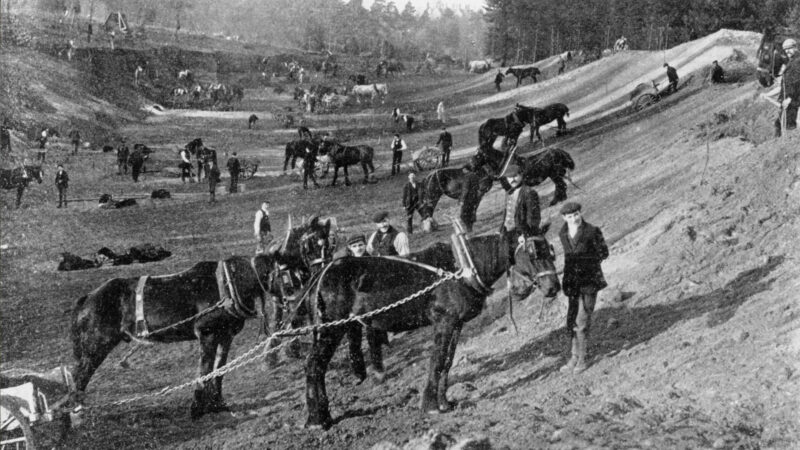
Brooklands was built in nine months by 700 people working almost around the clock, seven days a week
National Motor Museum/Getty Images
“That’s when my grandfather stepped in,” says Hanford. Sir Francis Gore-Browne, Ethel’s brother, was a QC and expert in property law. “He helped with the property sales and then put money in himself. He sold his Kensington house, moved in with the LKs and commuted to London.
“My first visit to Brooklands was as a schoolboy in the early 1920s. Aunt Ethel took us round the Outer Circuit in her open Chevrolet – my first trip over 60mph. The three children were in the back trying to hold a rug over our knees. Ethel laughed about the sewage farm’s proximity to the track. She said, ‘It will give them a soft landing!’”
It was, as Hanford points out, very unusual for a woman to drive in the early days. “However,” he adds, “Hugh had the fourth car in Britain.” Ethel always had cars, too, from a De Dion to a Ford V8, and even competed in the Ladies Bracelet Handicap in 1908. But, says Hanford, “She was a furious driver. Frightful. Everyone in Weybridge got out of her way.”
Hanford’s next visit to the Track was for a Double Twelve race. “We went from Brooklands House with badges which let us straight in. Aunt Ethel was always busy during racing – she was very involved in running things, although they had a good manager at the Track.” In the first place this was Baron de Rodakowski, a rather exotic figure who had been the manager of the Mena Palace, the royal lodge in Cairo which the Locke Kings turned into a hotel in the 1890s. (It remained in Ethel’s ownership after Hugh died, as did the Track.)
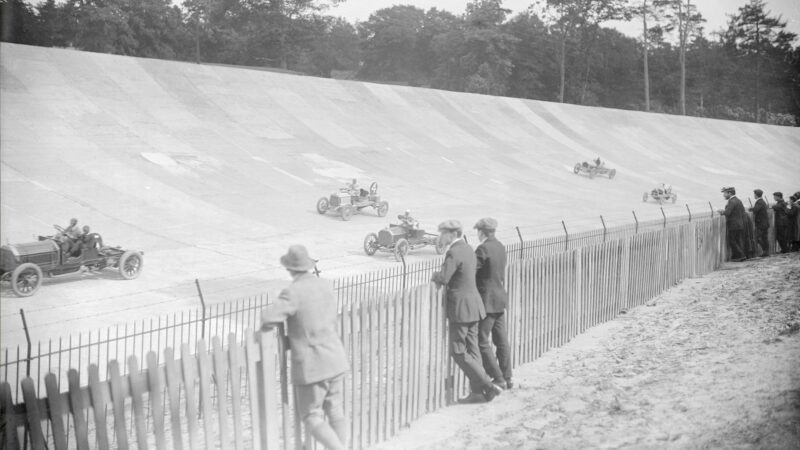
The racing as seen from the 2/6 (two shillings and sixpence) enclosure
Topical Press Agency/Getty Images
Brooklands evolved many track variations, but Hanford’s favourite was the Mountain Circuit. “The great advantage was that you could see cars all the time.” He also saw an event which was seminal to this magazine – the ‘Old Crocks Race’. Despite the disparaging title, it fuelled the passion of a young Bill Boddy, by then working at the Track.
“I used to go down from London when I was a medical student,” continues Hanford. “I could afford the rail fare but nothing else. Luckily I would get lunch at the house. By then the Track had become a society venue, publicised by people such as Sir Malcolm Campbell and Earl Howe, to many of whom Aunt Ethel introduced me.”
Hanford inherited the family’s racing interests, running a tuned Austin 7 in JCC Trials. “I also went to Donington and saw the Germans triumph there before the war. I went to Crystal Palace, too – appallingly dangerous for spectators, with only a chestnut paling between us and the cars. I saw a wheel flying towards us and had to jump! At Brooklands you were a long way from the cars, so it was safer.”
Another crucial element at Brooklands was the aerodrome. “They cleared the land in the middle to make the second aerodrome in Britain [in 1908]. Bleriot visited it, and AV Roe took my mother up, with her faithful dog, which howled all the time they were in the air.
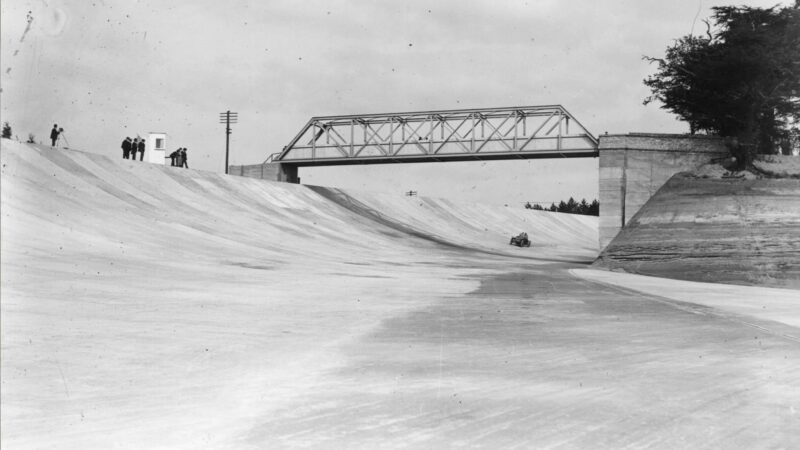
The freshly-laid track welcomes its first racers at Brooklands’ inaugural July 1907 meeting
Hulton Archive/Getty Images
“Brooklands House was a Victorian mansion where, after Hugh’s death, Aunt Ethel kept a butler, maid and cook, but no chauffeur. She ran it as a hospital during WWI.” It was for her Red Cross efforts that Ethel became a Dame of the British Empire in 1922. The house is now a technical college.
After Hugh’s death in 1926, Ethel remained sole owner and head of Brooklands Estates and tried to maintain his direction through the 1930s; despite its increasingly outdated form, these were some of Brooklands’ greatest years. In 1936 a limited company was formed to buy the Track from her, and she moved to nearby Caens Hill, beside the entrance road, a house Hugh had built and sold, only to buy it back when the occupiers complained about the noise from the racetrack. Ethel still came to the racing, and opened the new Campbell Circuit in 1937. Hanford visited her at Caens at the end of the war. “She had given up driving by then so I offered her a drive; she asked to be driven round the garden to see the flowers.”
In a letter to Bill Boddy at the time of the circuit’s sale, she explained that she had tried to carry on her husband’s vision of a facility to benefit both sport and industry, and only withdrew due to increasing age. She died aged 92 in 1956, shortly before the unveiling of the Brooklands Memorial, the concrete proof that Brooklands would never reopen as a racetrack.
